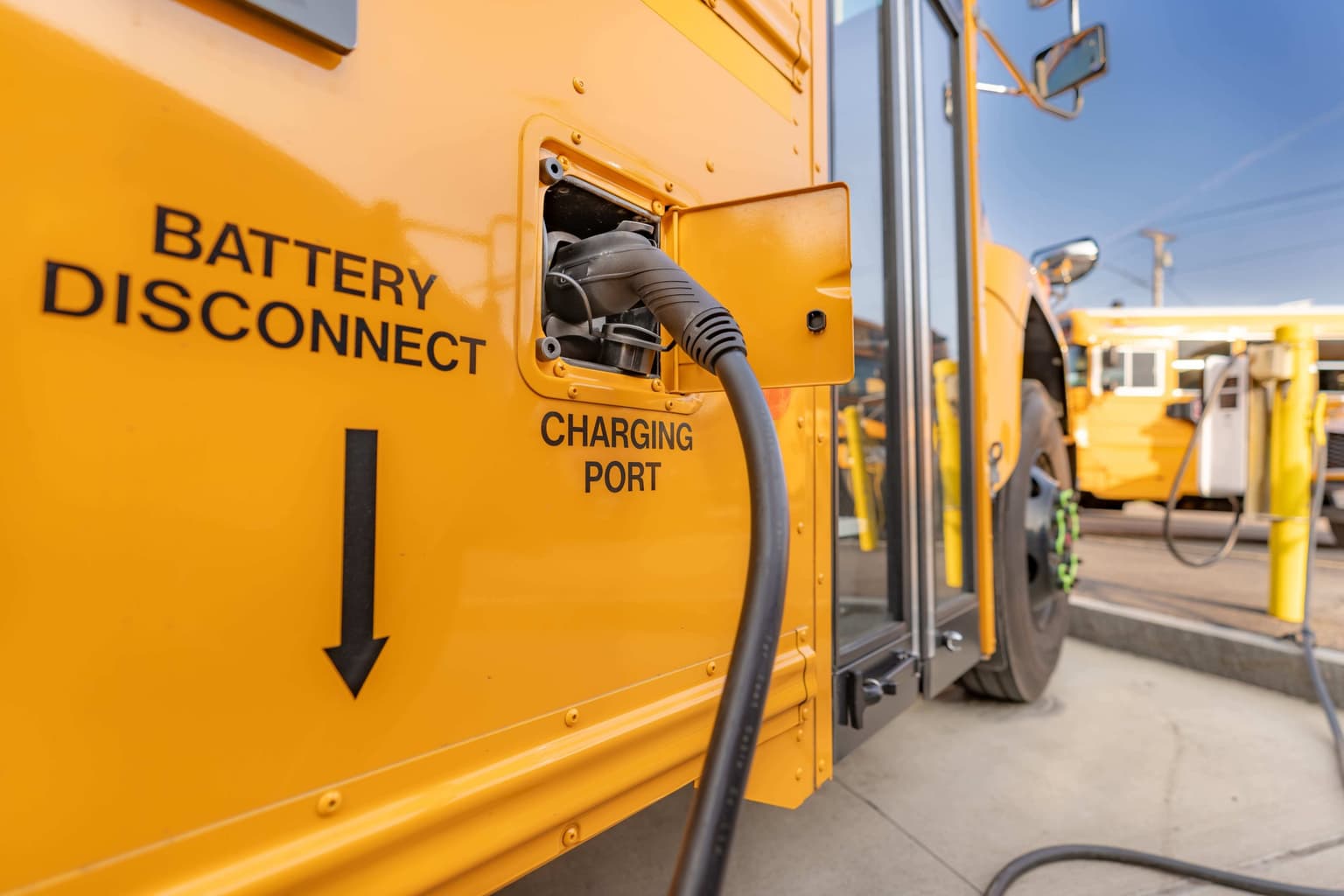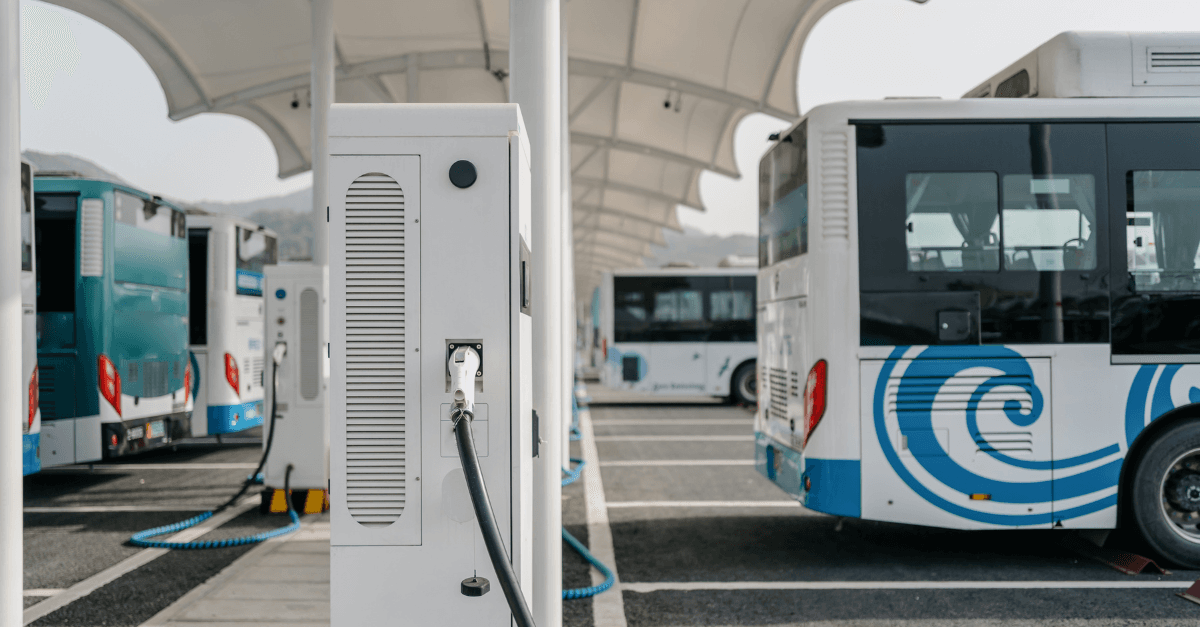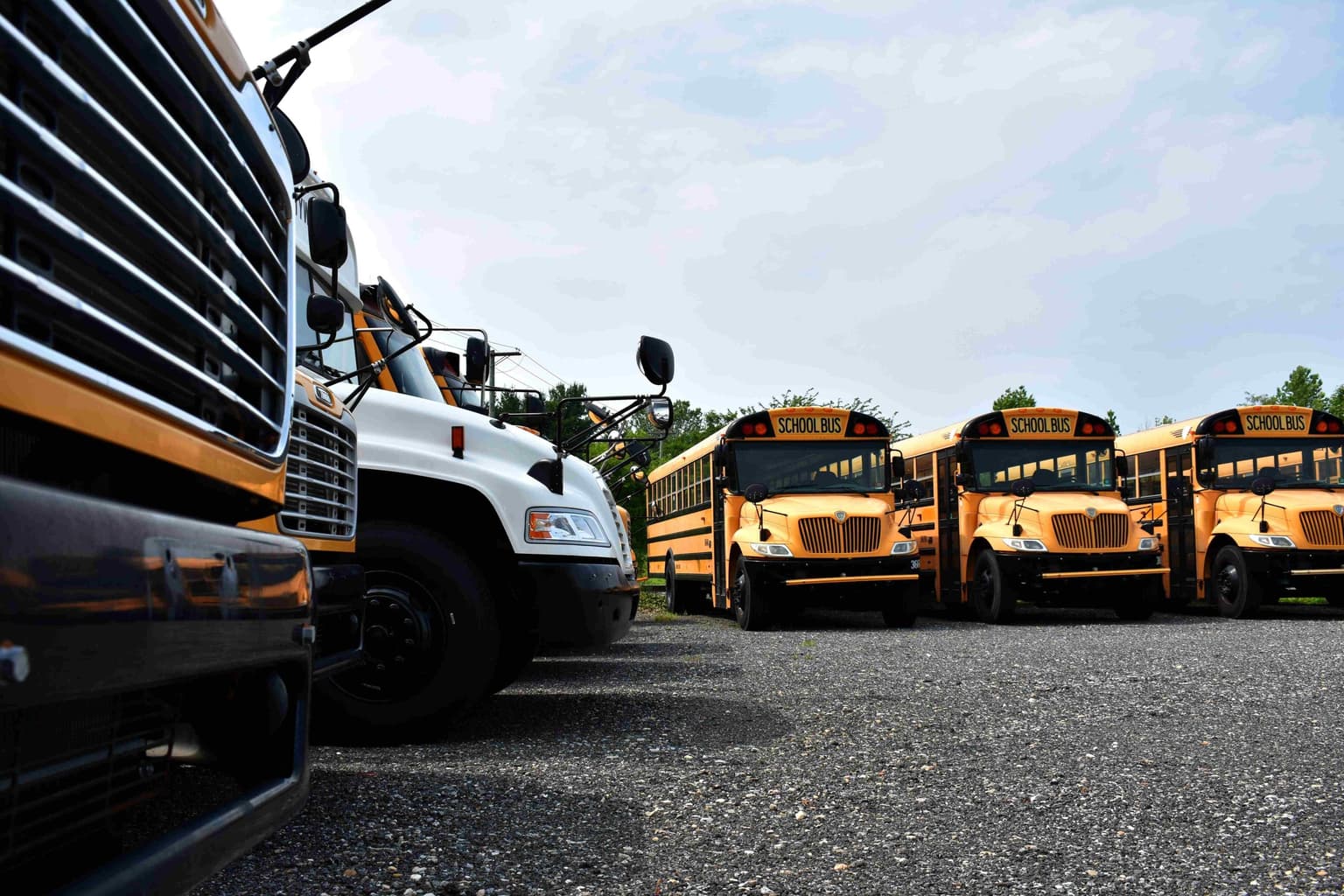
Electric School Buses: Are They Ready for Private Schools?
For years, electric school buses were seen as the future—quiet, clean, and promising to save districts money over time. For private schools, the question isn’t whether electric buses are a good idea, it’s whether they’re ready for reality: tight budgets, small fleets, and the need to keep every vehicle running on schedule.
We’ll look at what’s working, what’s not, and what smaller school operations need to weigh before jumping in.
1. The State of the Technology
Electric school buses are no longer prototypes. Major OEMs like Blue Bird, Thomas Built, and IC Bus now offer fully electric models with the same safety standards as their diesel counterparts.
However, most electric buses are still sold into public district fleets, not private schools, because of the upfront cost and infrastructure complexity.
- The average electric school bus costs between $350,000 and $450,000, compared to $110,000 for a new diesel model (Yale E360, 2024).
- Battery packs make up 30–40% of total cost, and their replacement cycle (8–10 years) adds another long-term expense (EPA Clean School Bus Program).
That doesn’t mean the technology isn’t improving. The latest models from Blue Bird and Thomas feature 200–300 kWh battery packs with 120–150 miles of range per charge—plenty for daily routes under 100 miles. But most private schools don’t have dedicated charging bays or maintenance staff trained on high-voltage systems, which changes the cost calculus.
2. Range and Charging: The Real-World Limits
Range anxiety isn’t just a commuter issue. For smaller operators, every mile matters.
- A fully charged 2024 Blue Bird Vision Electric can cover up to 130 miles per charge under ideal conditions, but that range drops in cold weather or hilly terrain (Blue Bird Electric Vision Specs).
- Charging takes 6–8 hours on a standard Level 2 setup or about 3 hours using a DC fast charger.
- Each charger installation can cost $10,000–$40,000 depending on site power capacity (U.S. Department of Energy).
For private schools running one or two buses, that’s a serious consideration. A diesel bus fills up in minutes and can be serviced at any truck shop. An electric one may need overnight charging and specialized maintenance contracts.
3. Total Cost of Ownership: The Five-Year Math
Electric bus advocates often cite lifetime savings through reduced fuel and maintenance. And they’re right—if the bus runs enough miles per year to offset its higher purchase price.
Let’s see what that looks like:

Even with energy savings, it takes 12–15 years of steady daily use to break even with diesel (National Renewable Energy Laboratory, 2023). That makes sense for large public fleets—but not always for smaller private schools that run shorter routes or only operate seasonally.
4. Incentives and Grants
The good news is that grants can close much of that gap. The EPA’s Clean School Bus Program offers up to $375,000 per bus for qualifying applicants (EPA CSB Program, 2024).
However, these grants prioritize public school districts and low-income areas. Private schools and charter programs typically qualify only if they serve disadvantaged communities or partner with eligible districts.
At the state level, programs like California’s HVIP, New York’s NYSERDA Clean Transportation, and Virginia’s Dominion Energy Bus Initiative provide additional funding, but each has narrow eligibility windows.
It’s possible for a private institution to benefit, but navigating the paperwork often requires outside grant-writing help.
5. Maintenance and Infrastructure Realities
Even for schools that can afford an electric bus, the hidden challenge isn’t in the bus itself, it’s in everything that comes after. EV fleets require dedicated maintenance training, specialized diagnostics, and dependable charging infrastructure.
- Power supply requirements: Installing chargers isn’t the hard part; getting enough power to run them is. Most private schools don’t have the electrical capacity to support multiple high-voltage bus chargers, meaning utility upgrades are often required. And this is a process that can take months and adds substantial cost.
- Maintenance readiness: EV buses require specialized technicians and diagnostic equipment, which can make ongoing service and parts availability more difficult for smaller institutions.
- Planning: If your team isn’t yet equipped for EV maintenance, start planning early. Specialized service isn’t optional with electric buses, and having the right partner in place can make or break uptime. Our Find a Bus Mechanic Tips Guide explains how to locate qualified technicians and shops that can safely handle high-voltage systems.
- Performance variables: Battery efficiency drops in cold or extreme heat, affecting range and route reliability. These are factors many districts underestimate when planning fleet schedules.
For small schools with no spare vehicles, that risk matters. Reliability, not innovation, keeps students moving.
6. The Realistic Adoption Timeline
Based on current infrastructure growth and grant cycles, electric school buses will likely become practical for private schools around 2030–2035.
By then, battery costs are projected to fall below $80/kWh (from $140 today), and charging infrastructure will be more widespread (BloombergNEF Battery Report, 2024).
Until then, private schools will continue to find the best short-term ROI in used diesel or propane-powered buses—vehicles that cost less, require minimal setup, and can run for another decade with routine care.
7. The Takeaway
Electric school buses represent real progress—but they’re not yet a plug-and-play solution for private schools. The costs, infrastructure needs, and limited grant access make them better suited to large, public operations with dedicated facilities and budgets.
That doesn’t mean you shouldn’t plan ahead. Schools that begin exploring now—reviewing route data, assessing electrical capacity, and budgeting for phased upgrades—will be ready when the economics finally make sense.
For everyone else, the best move today is stewardship: buying smart, maintaining wisely, and preparing for what’s next. If your school is considering testing the waters with one vehicle, our Electric Buses for Small Fleets Guide outlines how smaller operators are adopting EVs in manageable phases—covering funding strategies, range planning, and lessons learned from early adopters.
Charging Ahead
The future is electric—but timing matters. For private schools, that future isn’t today.
Until electric models match diesel’s affordability, availability, and uptime, the best investment remains a well-maintained used bus—and that’s where BusesForSale.com helps schools make smart, confident purchases every day.
Want to know more? Check out our comprehensive Electric Buses for Small Fleets Guide
Check the Stats
Looking for. amore in depth view at costs? Check out the sources we used and do the math for yourself.
Share on:



